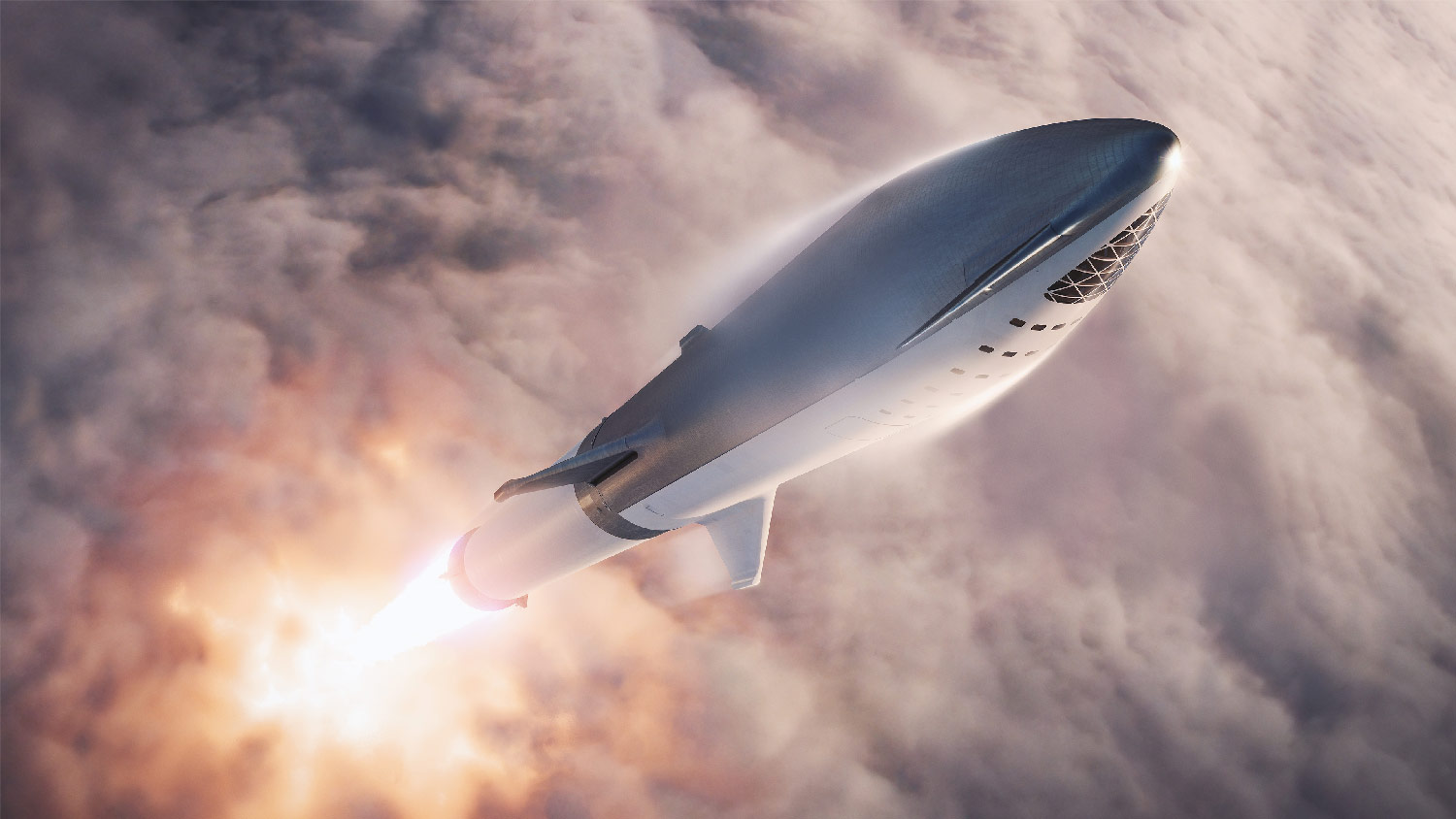
SpaceX is preparing to launch its Starship spacecraft into orbit, pending approval from the Federal Communications Commission (FCC).
Teslarati reported that FCC applications submitted on September 9 reveal that SpaceX requested permission to “authorize Starship suborbital test vehicle communications for SpaceX Mission 1569 from the Boca Chica launch pad.”
The test will include an “Experimental launch, landing, and recovery of the Starship suborbital test vehicle.” The vehicle will land about hundred or so feet from its launch site.
SpaceX CEO Elon Musk confirmed the flight preparations in a tweet on Tuesday.
Getting ready for flight of orbit-class Starship design https://t.co/CtXtq522ia
— Elon Musk (@elonmusk) September 10, 2019
If approved, the test will take place at SpaceX’s launch facility in Boca Chica, Texas. The application dates point to the possibility that the company could launch the Starship prototype, known as Starship Mk1, as soon as October 13.
SpaceX is hoping for Starship Mk1 to reach an altitude of 22.5 km (13.98 miles). This height is a significant upgrade from SpaceX’s Starhopper engine tests, which reached 150 meters (492 feet) during its August 27 launch.
Starhopper is the prototype to Starship, which SpaceX hopes to be used as a commercial spacecraft that will be able to take off and land again, like an airplane. The hope is to have Starship ready for commercial flights by 2021. Musk has previously said that SpaceX hopes to land the Starship on the moon by that year, followed by a crewed mission a year or two later.
These tests are essential to perfecting the Starship rocket. Musk’s ultimate goal is to help set up a colony on Mars, bringing people on a trip to the moon, and even bring used for transcontinental travel.
SpaceX’s race to dominate the field of space travel also includes a partnership with NASA. In July, NASA announced the partnership with SpaceX to advance commercial space and future NASA missions, specifically to the moon and hopefully even Mars.
NASA also selected SpaceX to create spacecrafts, rockets, and systems to carry astronauts to the space station for missions.
Digital Trends reached out to SpaceX for additional information about the launch of the Starship Mk1, but we haven’t heard back from them yet. We’ll update this story if we receive more details.
Editors' Recommendations
- Watch SpaceX fire Starship’s Raptor engines ahead of 4th test flight
- Elon Musk throws some light on his very busy schedule
- FAA review of SpaceX Starship launch delayed by another month
- Watch SpaceX’s Crew-4 astronauts arrive at new home in space
- SpaceX Crew-4 astronauts are on their way to the space station




